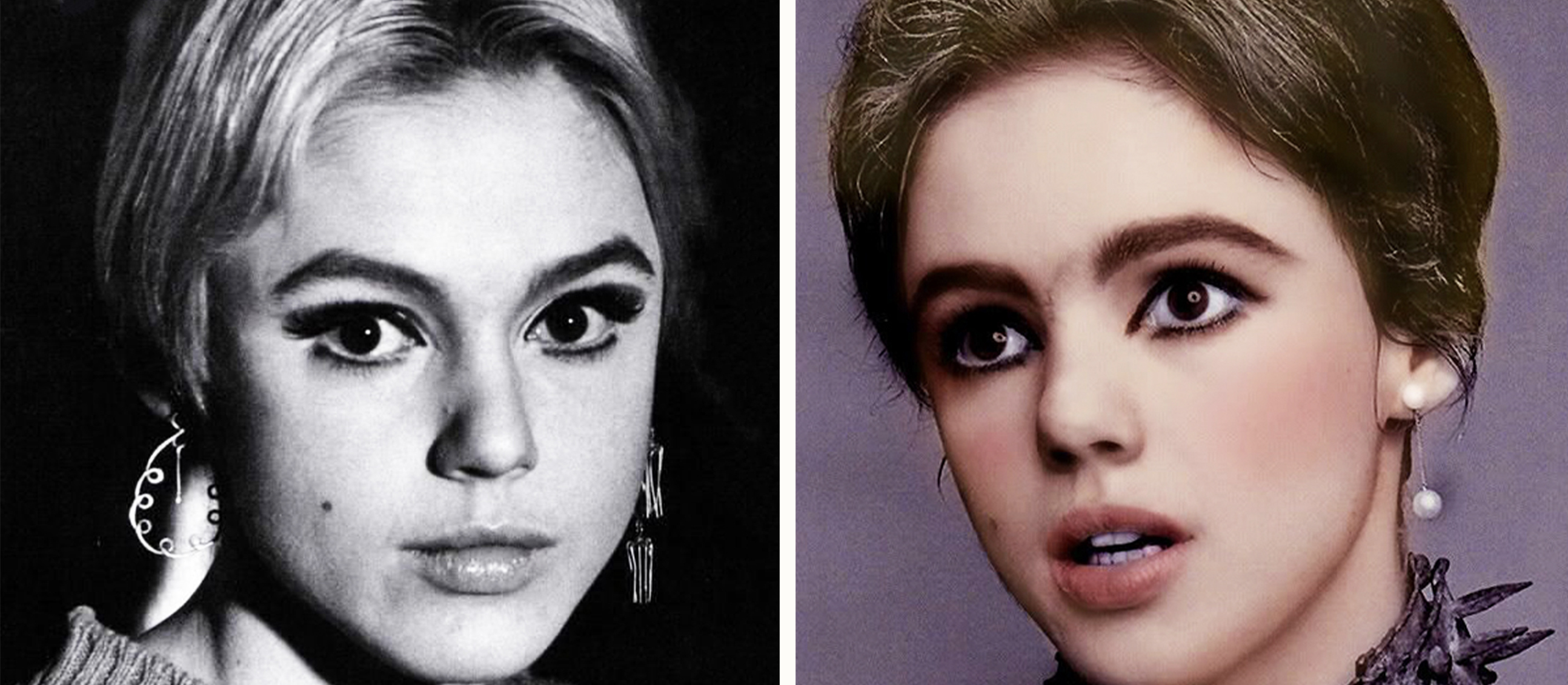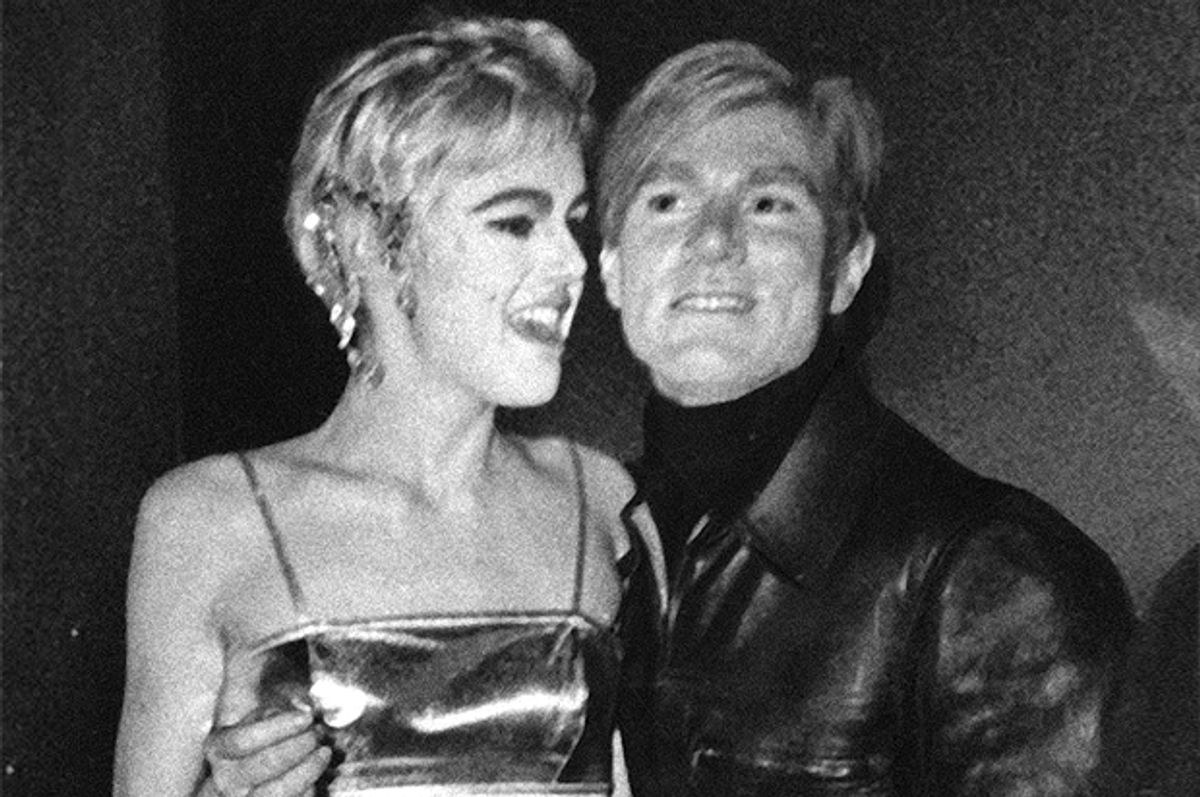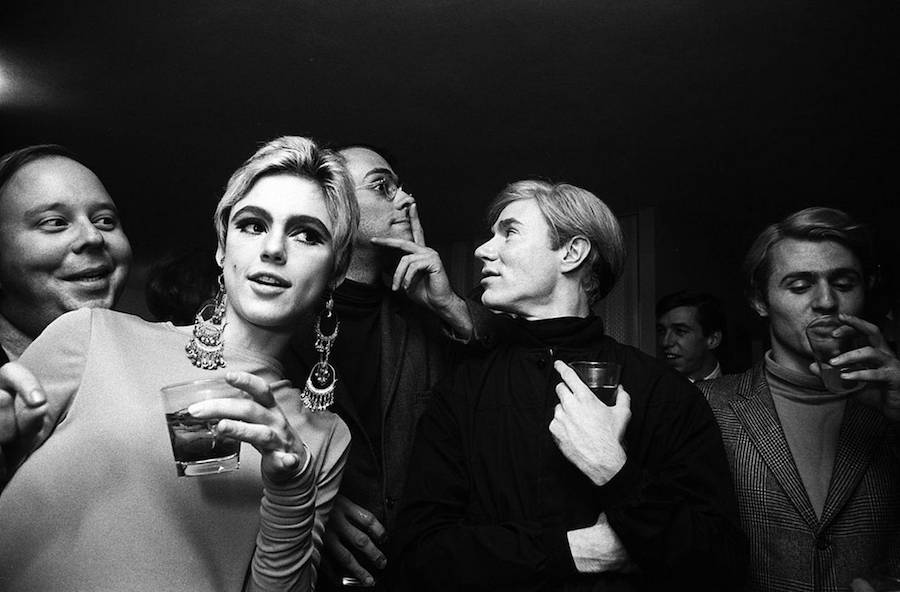Edie Sedgwick: Unraveling The Enigma Of Warhol's Tragic Muse
In the vibrant, tumultuous landscape of the 1960s, few figures shone as brightly, or burned out as quickly, as Edie Sedgwick. She was the quintessential "It" girl, a captivating socialite and model whose effervescent charm and striking beauty made her the undisputed darling of Andy Warhol's legendary Factory. Yet, beneath the glittering surface of her fame lay a complex, often painful reality, making Edie Sedgwick not just a style icon, but a poignant symbol of the era's excesses and its human cost.
This article delves into the life and legacy of Edie Sedgwick, exploring her meteoric rise, her profound influence on fashion and culture, and the personal struggles that ultimately led to her tragic demise. We will examine how her story continues to resonate, serving as both an inspiration for personal style and a cautionary tale about the perils of unchecked fame and vulnerability.
Table of Contents
- Who Was Edie Sedgwick? A Brief Biography
- Edie Sedgwick: Warhol's Ultimate Muse
- The Downward Spiral: Challenges and Controversies
- Edie's Enduring Legacy in Pop Culture
- Beyond the Hype: The Real Edie Sedgwick
- The Cautionary Tale of Edie Sedgwick
- Why Edie Sedgwick Still Matters Today
- Conclusion
Who Was Edie Sedgwick? A Brief Biography
Edith Minturn Sedgwick, known to the world simply as Edie, was an influential American actress and model. Born on April 20, 1943, in Santa Barbara, California, she was the seventh child of a prominent and affluent family with deep roots in American history. Her lineage included a signer of the Declaration of Independence and a founder of the town of Stockbridge, Massachusetts. This aristocratic background, however, belied a turbulent home life that would profoundly shape her future.
- Javier Bardem Children
- Brian Tyree Henry Married
- %C3%B6zge Ya%C4%9F%C4%B1z Husband Photo
- Julia Taslim
- Charli Damelio Feet
Edie's early life was marked by significant challenges, particularly concerning the mental health of her father, Francis Minturn Sedgwick. He struggled with mental illness, spending his teenage years in and out of psychiatric clinics and eventually being diagnosed with manic-depressive illness (now known as bipolar disorder). This familial history of mental health issues, combined with a strict and often chaotic upbringing on a sprawling ranch, laid a complex foundation for Edie's own emotional landscape. Despite the affluence, the Sedgwick household was far from stable, impacting Edie and her siblings deeply. This early exposure to instability would, in many ways, foreshadow the tumultuous nature of her adult life.
Early Life and Family Background
Growing up on the family's large ranch, "Rancho La Laguna," Edie's childhood was isolated, yet she possessed an innate charisma. Even as a young girl, she exuded a unique magnetism. Her family's wealth provided access to education, but her formal schooling was often interrupted by stays in various institutions due to anorexia and other struggles. These early battles with her health and emotional well-being hint at the deeper vulnerabilities she carried, long before she stepped into the spotlight.
The Road to New York
After a brief period studying sculpture at Radcliffe College, Edie Sedgwick eventually made her way to New York City in 1964. It was here, in the burgeoning counter-culture scene of the mid-1960s, that she truly found her stage. With her striking pixie haircut, large expressive eyes, and an innate sense of style, she quickly became a fixture in the city's bohemian circles. Her arrival in New York marked the beginning of her transformation from a troubled young woman from an affluent family to a dazzling socialite poised to become a cultural phenomenon. Her vibrant personality and unique look made her instantly noticeable, setting the stage for her fateful encounter with Andy Warhol.
- George Straits Wifes Health
- Clint Eastwood Grandchildren
- Drew Scotts Family Photos
- Home Town
- Audrey Lokelani Fualaau
| Attribute | Detail |
|---|---|
| Full Name | Edith Minturn Sedgwick Post |
| Known As | Edie Sedgwick |
| Born | April 20, 1943 |
| Birthplace | Santa Barbara, California, U.S. |
| Died | November 16, 1971 (aged 28) |
| Cause of Death | Barbiturate overdose (ruled accidental) |
| Nationality | American |
| Occupation | Model, Actress, Socialite |
| Parents | Francis Minturn Sedgwick (father), Alice Delano de Forest (mother) |
| Spouse | Michael Post (m. 1971) |
| Notable Association | Andy Warhol and The Factory |
Edie Sedgwick: Warhol's Ultimate Muse
It was in 1965 that Edie Sedgwick's life intersected with that of Andy Warhol, an encounter that would define her public image and solidify her place in pop culture history. Warhol, ever the master of observation and manipulation, was immediately captivated by Edie's effortless glamour, her aristocratic charm, and her seemingly boundless energy. She was, as many described her, a "bright social butterfly whose candle of fame burned brightly at both ends." This innate sparkle made her the perfect embodiment of Warhol's aesthetic and the ideal subject for his experimental films.
Their collaboration was intense and immediate. Edie quickly became the superstar of The Factory, Warhol's infamous studio and social hub. She starred in several of his short films, including "Poor Little Rich Girl," "Kitchen," and "Beauty No. 2." These films, often improvised and raw, showcased Edie's natural screen presence and her unique ability to command attention. Her presence at The Factory was magnetic; she was the life of every party, the center of every conversation, and the muse who inspired some of Warhol's most iconic works. The dynamic between them was symbiotic: Warhol gave Edie a platform and amplified her star power, while Edie provided Warhol with an endlessly fascinating subject and a tangible link to the world of high society and fashion.
The Factory Years
The Factory was a crucible of creativity, eccentricity, and often, chaos. For Edie Sedgwick, it was a world where she was celebrated, adored, and constantly in the spotlight. Her days were a blur of filming, socializing, and living life at a breakneck pace. She became synonymous with the "Factory look" – big eyes, heavy eyeliner, leotards, and oversized fur coats. Her unique style was instantly recognizable and widely emulated, making her an accidental fashion icon.
However, the intense environment of The Factory also had its drawbacks. The permissive atmosphere, coupled with Warhol's detached observation, meant that Edie's burgeoning struggles with drug use and mental health were often overlooked or even inadvertently encouraged. While she found fame and a sense of belonging, the very nature of her celebrity at The Factory contributed to her eventual downfall. The line between art and life blurred, and Edie, as a central figure, bore the brunt of this blurring.
Fashion and Style Icon
Before Twiggy became the face of the mod era, Edie Sedgwick was already setting trends. Her distinctive style – often characterized by her cropped hair, dark eyebrows, and striking use of black and white clothing – was revolutionary. She favored minimalist yet bold looks, often pairing simple leotards with extravagant jewelry or fur coats. Her ability to effortlessly combine high fashion with an almost childlike innocence created a captivating aesthetic that resonated with a generation eager to break from tradition. It's no wonder that even today, people attempt to emulate her unique flair, though many realize that "she’s not Edie Sedgwick either in body or in" spirit, as her look was an extension of her inimitable personality.
Edie's influence extended beyond just clothing; she embodied a certain attitude. Her confidence, her playful spirit, and her uninhibited way of being made her a style icon whose impact transcended mere trends. She influenced personal style for countless individuals, intentionally or unintentionally. For those who love "all things vintage," Edie remains a primary source of inspiration, a testament to her timeless appeal.
The Downward Spiral: Challenges and Controversies
Despite her dazzling public persona, Edie Sedgwick's life was increasingly plagued by personal demons. The same intensity that fueled her creativity and charisma also contributed to her struggles. Her involvement with The Factory, while catapulting her to fame, also exposed her to a lifestyle that exacerbated her vulnerabilities. The "bright social butterfly" was, in reality, battling severe mental health issues and a growing addiction to drugs.
The relationship between Edie and Warhol began to fray as her drug use intensified and her behavior became more erratic. The Factory, which had once been her sanctuary, became a source of increasing pressure and disillusionment. By late 1965, her collaboration with Warhol had largely ended, and she sought to forge her own path in Hollywood. However, her struggles followed her, making it difficult to sustain a career outside of Warhol's orbit.
The Dark Side of Fame
Edie's later years were marked by a tragic decline. Her battle with addiction and mental illness became increasingly public, leading to hospitalizations and a significant deterioration of her physical and mental health. The vibrant energy that had once defined her was slowly consumed by her struggles. Comments about her appearance, such as her "busted filler car wreck of a face" in later years, while harsh, reflect the visible toll her lifestyle took. It's a stark reminder of the destructive power of addiction and the unforgiving nature of public scrutiny.
Her struggles ultimately led to her being "banned from the fashion world because of her relation with the Factory" and the negative perceptions surrounding her increasingly troubled life. This banishment highlights the often-hypocritical nature of the industries that initially embraced her, quick to discard those who no longer fit the pristine image. Despite attempts at recovery and a brief marriage to Michael Post in 1971, Edie Sedgwick's life ended tragically on November 16, 1971, at the age of 28, due to a barbiturate overdose, ruled accidental. Her death marked a somber end to a life that had burned so brightly, yet so briefly.
Edie's Enduring Legacy in Pop Culture
Decades after her death, Edie Sedgwick remains a captivating figure in pop culture. Her image, style, and tragic story continue to inspire artists, designers, and filmmakers. Her life has been the subject of numerous books, documentaries, and even a feature film, "Factory Girl," starring Sienna Miller. As her life story comes to the screen and is continually revisited, it underscores the enduring fascination with her unique blend of glamour, vulnerability, and artistic collaboration.
Her influence is particularly evident in fashion. Edie's signature style, characterized by her gamine figure, bold eyes, and simple yet impactful outfits, continues to be referenced on runways and in street style. She embodies a timeless cool that transcends the specific trends of the 1960s. Her ability to make simple pieces look incredibly chic is a lesson in personal style that resonates even today. Many aspiring models and fashion enthusiasts look to Edie as a paragon of effortless style, a testament to her lasting impact on the aesthetic landscape.
Beyond fashion, Edie Sedgwick represents a particular moment in American cultural history – the intersection of art, celebrity, and counter-culture. She symbolizes the allure and danger of Warhol's world, a period when boundaries were pushed, and new forms of artistic expression emerged. Her story serves as a lens through which to understand the complexities of the 1960s, a decade of immense social change and personal liberation, but also one fraught with peril for those who navigated its extremes.
Beyond the Hype: The Real Edie Sedgwick
While the public image of Edie Sedgwick is often that of a glamorous, carefree socialite, it's crucial to look beyond the hype and understand the real person behind the legend. She was not merely a muse or a party girl; she was a complex individual grappling with profound personal issues. The "Data Kalimat" mentions someone having an "Edie friend" who "looks like her, acts like her, has the same sylph like magnetism as her, dances like her, and is equally as drug fucked, disordered and trainwreck driven." This vivid, albeit raw, description speaks volumes about the powerful, often destructive, allure of Edie's persona and the tragic reality of her struggles that became intertwined with her magnetism.
Understanding Edie requires acknowledging her vulnerabilities, her battles with mental health that began long before her fame, and the challenging family environment she grew up in. Her father's struggles with manic depression likely played a significant role in her own predispositions. Her journey was not just one of glitz and glamour but also one of profound internal conflict and a desperate search for stability and acceptance. This human dimension makes her story all the more compelling and tragic.
Many biographies, including those with "tons of photos," attempt to unravel the enigma of Edie. They seek to present a more complete picture of a woman who was more than just a surface phenomenon. She was an artist in her own right, even if her medium was her life itself, lived out in front of Warhol's camera. Her intelligence, wit, and sensitivity are often overshadowed by the sensational aspects of her story, but they were undeniably part of who she was.
The Cautionary Tale of Edie Sedgwick
Edie Sedgwick's life serves as a powerful cautionary tale about the dark side of fame, the perils of addiction, and the importance of mental health awareness. Her story highlights how quickly a "bright social butterfly" can become ensnared in a destructive cycle, especially when vulnerable individuals are thrust into environments that offer little support or guidance. The permissive atmosphere of The Factory, while creatively fertile, ultimately failed to provide the structure and care Edie desperately needed.
Her rapid ascent and equally swift decline underscore the fragility of celebrity, particularly in an era before widespread understanding of mental health and addiction. Edie's struggles were often sensationalized, contributing to her image as a "trainwreck" rather than seen as a person in dire need of help. This aspect of her story resonates with the YMYL (Your Money or Your Life) principle, as it touches upon critical issues of health, safety, and well-being. It prompts reflection on how society treats its vulnerable stars and the responsibility that comes with influence.
Her legacy reminds us that behind every glamorous facade, there can be profound human suffering. It’s a call to look beyond the superficial and consider the systemic issues that can contribute to such tragic outcomes. The way her story is recounted, such as by Rhoda Koenig unraveling "a very" complex narrative, often seeks to contextualize these struggles, providing a deeper understanding rather than mere sensationalism.
Why Edie Sedgwick Still Matters Today
Despite the passage of time, Edie Sedgwick's story continues to captivate and educate. Her relevance today stems from several key factors. Firstly, her indelible mark on fashion and personal style ensures her continued presence in conversations about vintage aesthetics and trendsetting. Her unique look remains an inspiration for those seeking to cultivate an authentic and impactful personal style, demonstrating how an individual's charisma can elevate simple garments into iconic statements.
Secondly, Edie's life offers crucial insights into the intersection of art, celebrity, and the human condition. Her relationship with Andy Warhol and her role in The Factory provide a window into a pivotal moment in art history, where the lines between creator and subject, art and life, were deliberately blurred. Understanding her story helps us comprehend the cultural shifts of the 1960s and the birth of modern celebrity culture.
Finally, and perhaps most importantly, Edie Sedgwick's tragic narrative serves as a timeless reminder of the importance of mental health awareness and the dangers of addiction. In an age where discussions around these topics are more open, her story provides a historical context, highlighting the severe consequences when such issues are left unaddressed or are exacerbated by external pressures. Her life underscores the need for compassion and understanding, urging us to see the person behind the persona, and to learn from the mistakes of the past to better support vulnerable individuals today.
Conclusion
Edie Sedgwick was more than just a fleeting sensation; she was a supernova who illuminated the cultural landscape of the 1960s, leaving an indelible mark on fashion, art, and the very concept of celebrity. From her privileged yet troubled upbringing to her dazzling, yet ultimately destructive, reign as Andy Warhol's muse, Edie's life was a whirlwind of contradictions. She embodied the era's boundless energy and its hidden dangers, a "bright social butterfly whose candle of fame burned brightly at both ends."
Her story continues to resonate, not just for her iconic style or her association with Warhol, but for the poignant human drama it represents. It is a narrative of immense talent and charisma overshadowed by profound personal struggles. Edie Sedgwick remains a powerful symbol – an inspiration for those who love all things vintage and a cautionary tale for anyone navigating the treacherous waters of fame and vulnerability. We encourage you to delve deeper into her fascinating life, perhaps by exploring the many biographies available or discussing her impact in the comments below. What aspects of Edie's legacy do you find most compelling? Share your thoughts and continue the conversation about this unforgettable icon.

Cool Facts About Edie Sedgwick, The Tragic It Girl Of The 60s

Bob Dylan Edie Sedgwick

Edie Sedgwick, The Ill-Fated Muse Of Andy Warhol And Bob Dylan